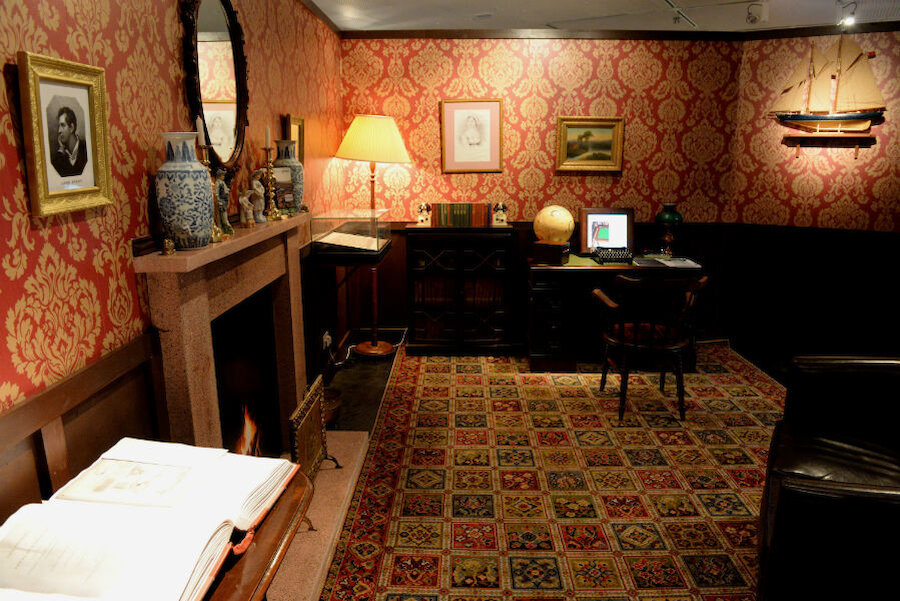A major new exhibition at the Shetland Museum and Archives tells the story of the literature of the northern isles through books, sound recordings, manuscripts and illustrations.
There are four themes: myths and legends; visitors to the islands; working lives; and the sounds of Orkney and Shetland. Interactive displays bring to life what it was like to live, to work and to write in the islands from the early nineteenth century to the present day. The exhibition includes items on loan from other galleries, such as a portrait of Walter Scott by William Nicholson and a Robert Louis Stevenson manuscript.
The exhibition is part of a year-long project, Writing the North, which has explored the historical literature of Orkney and Shetland and its links with the work of writers active today. The aim is to share the literature of the islands with as wide an audience as possible. Local schools have been invited to take part in the project by introducing the work of an author to pupils, who will interpret it in their own way through film or drama. Pupils from Sandwick Junior High School, in Shetland's south mainland, have been studying extracts from Sir Walter Scott's The Pirate, the novel in which Scott coined the name Jarlshof, then a manor house, which was later discovered to lie in the middle of a major archaeological site. The Sandwick pupils, along with their colleagues in schools at Brae, Aith and on the island of Whalsay, are producing short films to complement their work. Drama lessons, set design and costume planning will also feature in the programme.
There's much more about the project on the Writing the North website. The exhibition will run until 11 May, with a final day of events planned for Saturday 10 May, including a series of talks and an evening of poetry reading. The project is a collaboration between the University of Edinburgh, the Shetland Museum and Archives and the Orkney Library and Archives and is funded by a grant of £115,000 from the Arts and Humanities Research Council of the UK.

